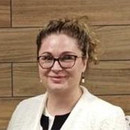How Are K–12 Schools Upgrading Their Libraries?
The new library space at Wasilla High School in Wasilla, Alaska, won't be entirely ready until fall of the 2023-2024 school year. However, the tech upgrades that were made this past school year have already had a strong impact on students, said Laura Anderson, the school’s librarian and media specialist. Demand to use the five 3D printers has been overwhelming, as students vie to print objects for classes and clubs. The vinyl cutter, t-shirt press and new laser engraver are also quite popular.
After four decades without any updates, Wasilla High’s library is finally being modified to “fit the needs of the modern student,” Anderson says.
The upgraded library will be split into three distinct sections:
- a traditional library space for reading and research
- a makerspace to support hands-on learning and pre-apprenticeship skills
- a job center that encourages students to explore career paths and connect with local employers
Modern, functional alternatives to the old tables and chairs include desks that allow students to sit or stand. All the new library furniture has wheels to quickly adapt to the needs of students and teachers.
“Prior to this transformation, the population of students who utilized this space was limited. The library is now more of a community space where students come to collaborate and work on projects. Teachers have also been using the space to work on projects. The library is now filled with students and has become the hub of the school,” says Anderson.
DIVE DEEPER: Untether tech in the modern K–12 learning environment.
Modern Libraries Feature Media Centers with Collaborative Spaces
In terms of layout, Holzweiss has noticed that — as a reaction to the isolation and distancing of the pandemic — school library upgrades often focus on creating warm, welcoming spaces. Students can use these spaces as a refuge from the day and also to connect with each other. New library furniture reflects this, introducing comfortable, collaborative furniture, like chairs and tables with dividers that allow students to work alone, in pairs or in small groups, but that can also be moved easily to create small pods.
Multimedia and production spaces are also popular when it comes to library upgrades. Podcasting rooms, green-screen rooms and news production studios where students can work together are showing up as schools make renovations. However, Holzweiss adds that these new features aren’t always housed in separate library rooms due to space constraints.












